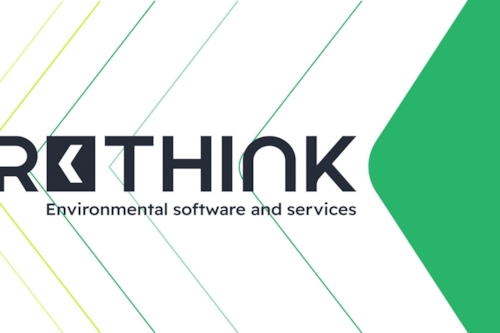
Environmental Product Declaration (EPD)
Receive a quote tailored to your needs
The Importance of EPDs
Environmental Product Declarations (EPDs) are essential tools for a sustainable future. They provide harmonized environmental information based on life cycle assessments (LCAs) and enable a comprehensive evaluation of products. EPDs identify optimization potentials and support companies in making sustainable decisions. With our services, we help you meet these requirements and achieve your goals.
Do you have questions about EPDs or our services? Our FAQs below provide detailed information.
EPDs: Frequently Asked Questions
What is an EPD?
An EPD is a standardized document that provides transparent and comparable environmental information about a product. EPDs fall under Type III Environmental Declarations according to ISO 14025 and are based on EN 15804 for construction products and EN 50693 for electronic and electrical products and systems. Before an EPD is published, it is verified by an independent third party to ensure its quality and credibility.
What does an EPD contain?
An EPD offers a transparent and scientifically grounded representation of a product's environmental impacts over its entire life cycle. Based on a Life Cycle Assessment (LCA), it can cover all phases—from production and installation to usage and disposal. The EPD provides quantifiable data, such as the global warming potential or acidification potential, presented in a structured format. This enables clear traceability and comparability of environmental impacts.
Our EPDs are created by experienced experts who are well-versed in the rigorous requirements for environmental product information.
Why is an EPD needed, and what are its benefits?
Environmental Product Declarations (EPDs) provide a solid decision-making foundation for companies, planners, architects, and consumers. They create transparency about a product's environmental impacts, supporting the selection of sustainable materials, achieving climate goals, and enhancing market positioning through credible environmental information.
Through comprehensive analysis, EPDs also reveal optimization potential along material and energy flows. As an EPD includes information on CO2-equivalent emissions in the form of global warming potential, it can also be used as an carbon footprint of products (CFP).
In the construction sector, EPDs fulfill critical requirements of the Construction Products Regulation (CPR) and are essential for calculating the life cycle assessment of buildings. They are indispensable for sustainable certification systems such as BNB, DGNB, BREEAM, or LEED. EPDs are the key to sustainable construction and transparent communication of ecological responsibility.
How to get an EPD?
The process of obtaining your EPD is simple: Contact us for a brief online consultation where we discuss your specific requirements. We will then provide you with a tailored offer.
Contact us at: de.nachhaltigkeit@kiwa.com
There are three main options available:
-
Full-Service Solution
We handle the entire process of creating your EPDs, including the independent verification by the program operator Kiwa-Ecobility Experts. We also coordinate communication and alignment with the external verification body. -
License for Our Online Tool R<THINK
With a license for our user-friendly online tool R<THINK, you can independently create EPDs and LCAs. We provide comprehensive onboarding and support you during the independent verification of your EPDs by the program operator Kiwa-Ecobility Experts. -
Combined Solution
We create your first EPD and then offer you a license for R<THINK, including onboarding. Since we also work with R<THINK, you can easily adopt and adjust the calculations we have prepared. This allows you to quickly and efficiently create EPDs for additional products based on our initial work.
How does an EPD project typically proceed?
-
Kick-off Meeting
An EPD project starts with a kick-off meeting where we jointly define the relevant products, life cycle phases to be considered, and the goal and scope of the study. -
Life Cycle Assessment (LCA)
Based on the data you provide, we create a detailed life cycle assessment. We provide suitable templates for this process—available online or, if needed, on-site. -
EPD Compilation
The results of the life cycle assessment are then formatted into the standardized structure of an EPD in accordance with the relevant standards. -
Verification and Publication
After independent verification, the finalized EPDs can be published, for example, in industry-specific databases. As an established member of the ECO Platform, we also have the ability to make your EPDs available on the ECO Portal—for maximum visibility and reach.
Product Environmental Footprint (PEF)
The "Product Environmental Footprint (PEF)" represents the next level of European environmental policy and serves to communicate essential environmental parameters in B2B and B2C.

Life cycle assessment (LCA)
A Life Cycle Assessment is used to quantify the environmental impacts of processes, products, services or organisations, usually as a basis for other sustainability applications such as Environmental Product Declarations, Product Environmental Footprints and CO2 footprints.

Carbon Footprint of Products (CFP)
A Product Carbon Footprint (PCF) following ISO 14067 records the total CO2 emissions that occur directly or indirectly over the life cycle of a product.

Create your life cycle assessment and EPD with R<THINK
R<THINK is a software application that enables companies to create Life Cycle Assessments (LCA), Environmental Product Declarations (EPD), and Carbon Footprints of Products (CFP), efficiently and according to international and European standards. With R<THINK you can carry out project-specific calculations as well as calculate the environmental impact of your entire product portfolio.

CO2 - Footprint / Certification CO2-neutral
The CO2 Footprint, also known as the Carbon Footprint, records the total CO2 emissions that occur directly or indirectly over the life cycle of a product system.

Overview sustainability services
Sustainability services with Kiwa – from quantification of environmental impacts, certification of sustainable products or services to the development of sustainability standards. Kiwa offers different services from quantification of environmental impact to the certification of sustainable products or services.

